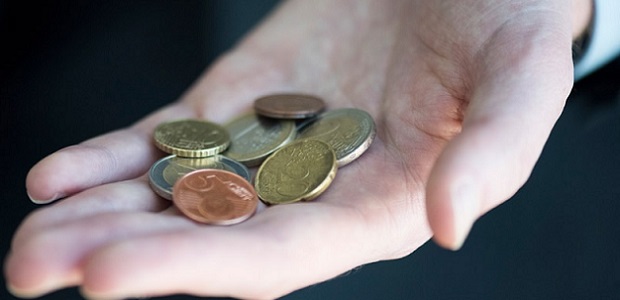ECB publishes study on how Europeans pay: „79% of all payments at POS are made with cash”

The results show that in 2016 around 79% of all payments at POS were made with cash, 19% with cards and 2% with other payment instruments. In terms of value, the market share of main payment instruments was 54% for cash, 39% for cards and 7% for other instruments. However, results show substantial differences between euro area countries.
The ECB has published the results of a comprehensive survey on the use of cash and other payment methods in the euro area. Europeans use cash for 79% of their payments, for example in shops and restaurants, the study shows.
Although euro banknotes and coins have been in circulation for fifteen years, not much is known about the actual use of cash by households. This paper presents an estimation of the number and value of cash transactions in all 19 euro area countries in 2016, based on survey results. It presents an extensive description of how euro area consumers pay at points of sale (POS).
The aim of this study is to shed light on consumers’ payment behaviour and in particular to improve the understanding of consumers’ payment choices at POS, based on a large sample of countries. Therefore, it provides central banks and relevant payment system stakeholders with fundamental information for the development of their policies and strategic decisions that can contribute to improving the efficiency of the cash cycle and the payment system as a whole.
Previous estimates of the value of cash usage by households in the euro area date from 2008. Since then some central banks have carried out their own research on cash usage. This paper is the first study to measure the transaction demand for cash in the euro area.
Main findings
The survey results show that in 2016 cash was the dominant payment instrument at POS. In terms of number, 79% of all transactions were carried out using cash, amounting to 54% of the total value of all payments. Cards were the second most frequently used payment instrument at POS; 19% of all transactions were settled using a payment card.
In terms of value, this amounts to 39% of the total value paid at POS. The use of cash and cards differs according to country, place of purchase, transaction value and consumers’ demographic characteristics.
In terms of number of transactions, cash was most used in the southern euro area countries, as well as in Germany, Austria and Slovenia, where 80% or more of POS transactions were conducted with cash. Cash was least used in the Netherlands, Estonia and Finland, where its share in the number of transactions ranged between 45% and 54%.
In terms of value, the share of cash was highest in Greece, Cyprus and Malta (above 70%), while it was lowest in the Benelux countries, Estonia, France and Finland (at, or below, 33%).
When looking at the demographic characteristics of euro area consumers, it can be concluded that men tend to use cash more often than women. Furthermore, consumers aged 40 and over use more cash than younger age groups, whereas cash usage appears to be relatively homogeneous across different levels of education.
Overall, the results put the use of cash relative to non-cash payment methods by consumers at POS into perspective, and indicate that the use of cash at POS is still widespread in most euro area countries. This seems to challenge the perception that cash is rapidly being replaced by cashless means of payment.
Indeed, as the results of this study show, when consumers are asked which means of payment they prefer, a larger share report to prefer cards rather than cash – despite the fact that they use cash more often. This contradiction may be explained by the fact that nearly two-thirds of the transactions conducted at POS in 2016 were below €15. Moreover, two-thirds of all POS transactions took place in shops for purchases of day-to-day items, as well as in restaurants, bars and cafés. On the other hand, only 8% of all POS transactions were above €50, and only 14% were made in shops for durable goods or in petrol stations.
When asked about their payment behaviour, people mostly seem to remember the larger value payments which they make less regularly, and tend to forget how frequently they make low-value payments on a daily basis. Access to payment cards does not seem to fully explain differences in payment behaviour, because on average access is high in all euro area countries. However, there seems to be a relationship between card acceptance (i.e. the perceived availability of card payment terminals) and cash usage. It can therefore be expected that in countries and market sectors where card acceptance is still low, cash usage may decrease once infrastructure for making card payments becomes more widely available.
More details here: The use of cash by households in the euro area
Dariusz Mazurkiewicz – CEO at BLIK Polish Payment Standard
Banking 4.0 – „how was the experience for you”
„To be honest I think that Sinaia, your conference, is much better then Davos.”
Many more interesting quotes in the video below:










